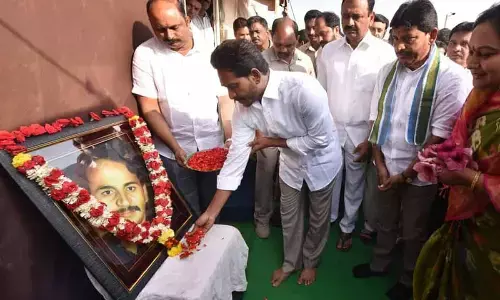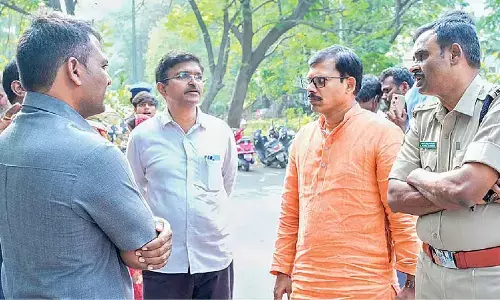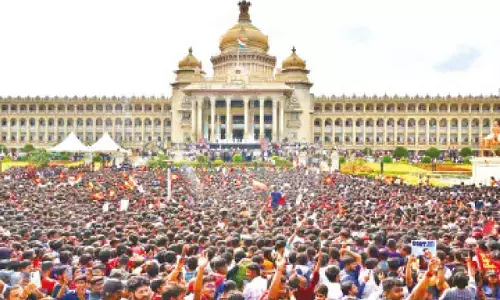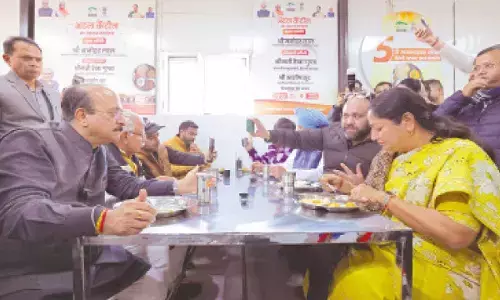Exploring Paper's Role: From Cinema to Industry and Environmental Impact

Exploring Paper's Role: From Cinema to Industry and Environmental Impact
Inspired by the Hindi film 'Kaagaz,' this piece delves into paper's multifaceted role, from its historical uses and impact in industry to its environmental significance and digital transition.
The inspiration to write a piece on the subject of paper, came to me from watching a Hindi movie called ‘Kaagaz’. The movie depicts, in a telling fashion, the role that the written word, and the paper on which it is written, play in the lives of people. Interestingly enough, the plot is woven around the travails of a person who, while very much alive and kicking, tries desperately to establish the fact that he is not, in fact, dead, as recorded in a government register!
The movie was followed by a sequel, ‘Kaagaz 2’, in which the importance of paper was brought out even more sharply. The message came out, loud and clear, that the mere passing of an order, by an authority, on a piece of paper, has little value, unless it is followed by concrete, and purposeful action, to convert the intention into tangible action.
My brother, a Chemical Engineer and a Paper Technologist, was closely associated with the early days of the paper industry in the country. He was a prominent figure in the paper industry and served as Secretary of the Indian Pulp and Paper Technologists Association. In the early 1960s, I spent a couple of summer vacations with him while he was working in the National Newsprint and Paper Mills or Nepa Mills Limited, in Nepa Nagar in (the then) Madhya Pradesh state.
The name Nepa, quite literally, was derived from the letters of the words newsprint and paper! It was the first paper mill in the country. A pioneering industrial unit established in 1947, it served the purpose of saving precious foreign exchange by manufacturing newsprint a substantial amount of which had to be imported, as it was in short supply at that time. I still have nostalgic recollections of the stench that pervaded the town, on account of the discharge from the factory, and of the siren that signaled the end of a shift and the beginning of the next one.
Paper mills, in those days, undoubtedly, polluted rivers and lakes with the discharge of poisonous affluents; one reason for that obnoxious smell. Mercifully, that is no longer the case, thanks to practices of Zero Liquid Discharge now being followed by the paper industry and its conforming to the norms of Pollution Control Boards.
One reason for my remembering those days is that, as I was walking one evening to the Officers’ Club for a game of table tennis, news came of the passing away of Jawaharlal Nehru. Years later, I spent some memorable days in the township attached to the Rajahmundry Paper Mills in Rajahmundry town of Andhra Pradesh state, where my brother had shifted to, after Nepa Nagar. Memorable, largely on account of the fact, that, those were the days of the early courtship of my wife Usha and I!
The word paper derives from the ancient Greek word Papyrus, subsequently borrowed by Latin and used in Egypt, for describing a material similar to thick paper, used as a writing surface made from the pith of the papyrus plant. Paper, it is commonly believed, was invented in China in the 2nd century, ADE, and spread thereafter to the West via Samarkand and Baghdad. The making of synthetic paper began in Spain and Sicily, in the 10th century, and gradually spread to Italy and France, reaching Germany and other Northern European countries by the 15th century. Arab merchants started paper making in India in the 13th century ADE.
Paper is a versatile material, which lends itself to several types of applications, such as printing, wrapping, decoration, writing, washing, filtering and currency, apart from industrial uses. It is used extensively in educational institutions and establishments such as banks and offices, and has, over time, come to play the role of a reliable friend, capable of changing the quality of life of human beings. Paper is also a popular raw material for cups, saucers and plates used for serving food, which can be conveniently disposed of together with the leftover food and are much lighter than those made of porcelain.
The saga of life begins, at birth, much like a sheet of blank paper, clean and empty. As the story of life unfolds, thereafter, the sheet gets filled with letters, words, and sentences. The arrow of time is inexorably pointed towards the future; the past can never be changed, and the words describing it on paper will remain an indelible memory.
Before the art of writing on material was developed, knowledge and information were transmitted by word of mouth alone. The Vedas for instance, were transmitted orally for thousands of years before they were written down. The palm leaf manuscripts on which the Vedas and Hindu epics such as Ramayanas and Mahabharatha, written down, were usually preserved for about 10 years or so, after which they were copied into new palm leaves, with the originals consigned by immersion in sacred rivers.
With the rapid development of technology, and the advent of the digital age, smartphones and computers, which readily provide instant updates, emerged as versatile instruments, for carrying out a range of transactions, from shopping to accessing the latest news. The print media, consequently, have become less popular. Time was, one recollects, when the newspapers were the window to the outside world, influencing people’s views and perceptions of the happenings around them. In 1975, for instance, when a national emergency was declared in India, Indian Express, the newspaper which had been carrying out a tirade against the imposition of that draconian measure, came out with a blank editorial column – as eloquent in its emptiness as the strongest words. Quite in contrast, on the day after the Second World War broke out, a very popular, but highly conservative newspaper, chose, for its Editorial, the subject of snakes in Iceland!
My brother was quite a character. Although short in stature physically, he was head and shoulders above the rest in matters of intellect and professional competence. He was also extremely popular, not only with his bosses and colleagues, but also with the factory workers both in Nepa Nagar and Rajahmundry. He had a devastating sense of humour and never hesitated to be the butt of a joke he told me, as he was leaving Nepal Nagar, practically the whole town came to the railway station to see him off, and a friend of his said to him, “See Murthy! They have all come to make sure that you are really leaving for good!”
(The writer was formerly Chief Secretary, Government of Andhra Pradesh)

















